Pitch Pocket (Pitch Pan) • Roof Flashing Explained
By Jack Gray, Roof Online Editor • Updated July 16, 2024
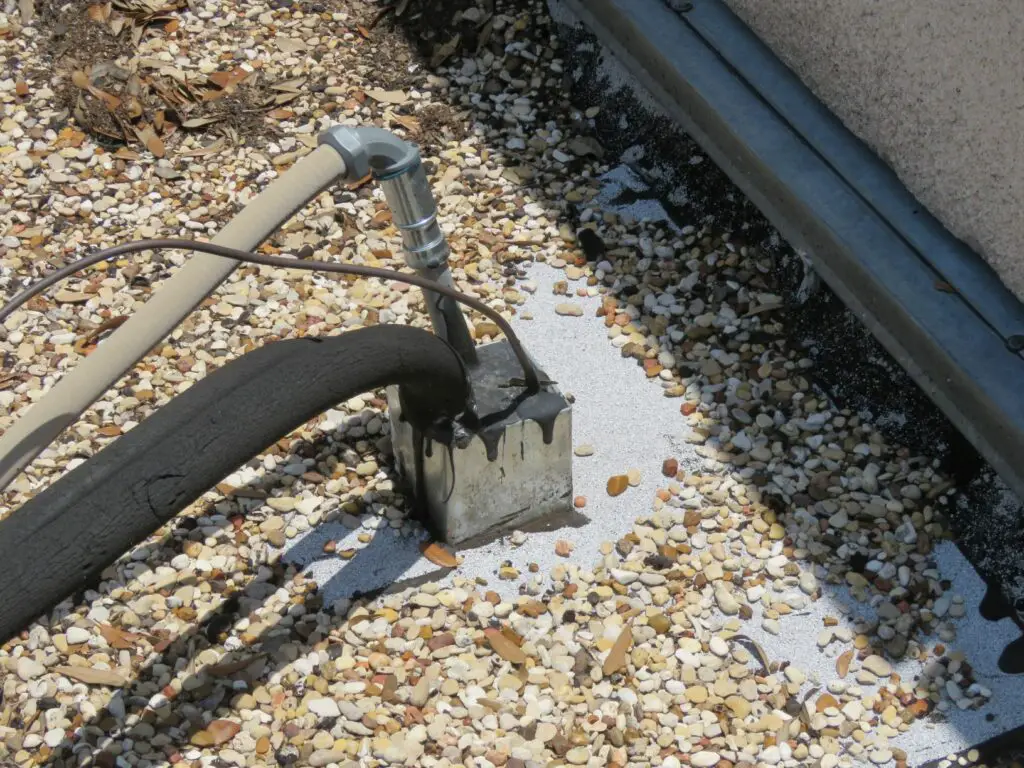
Table of Contents
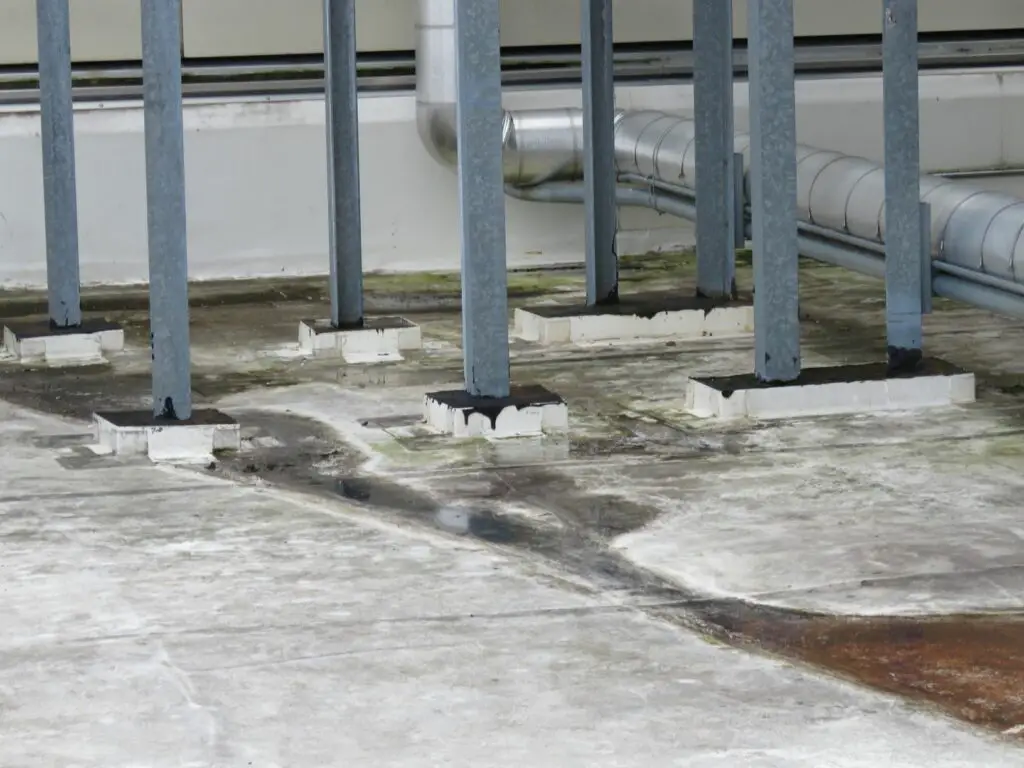
Pitch Pocket: Basic Information
Other Terms for a Pitch Pocket
Pitch pockets are also called pitch pans, penetration pockets, pitch boxes, or sealant pockets. “Pitch pocket” is the most common alternative name, and the use of one name or the other by roofers typically depends on what geographical region you’re in. We’re going to use both in this article.
The first pitch pockets were used to hold actual pitch. The original roofing pitch was derived from the sap of pine trees. Pine pitch was replaced by coal tar pitch, a by-product of coal processing, in the second half of the 19th century.
Coal tar pitch was the main waterproofing material in the flat roof industry for around a century, from the 1860’s to the 1960’s.
So that’s where the name comes from, even though actual pitch is almost never used any more.
What is a Pitch Pocket?
A pitch pocket is a type of roof flashing for small or irregular roof penetrations.
Pitch pockets look like boxes, rings, or cylinders made out of sheet metal (normally galvanized steel) or a pre-molded polymer. Although they are usually open at the top, some specifiers require pitch pockets to have covers on them for added weather protection.
Pitch pockets function as containers for the relatively large amount of sealant required to seal these small or irregular roof penetrations.
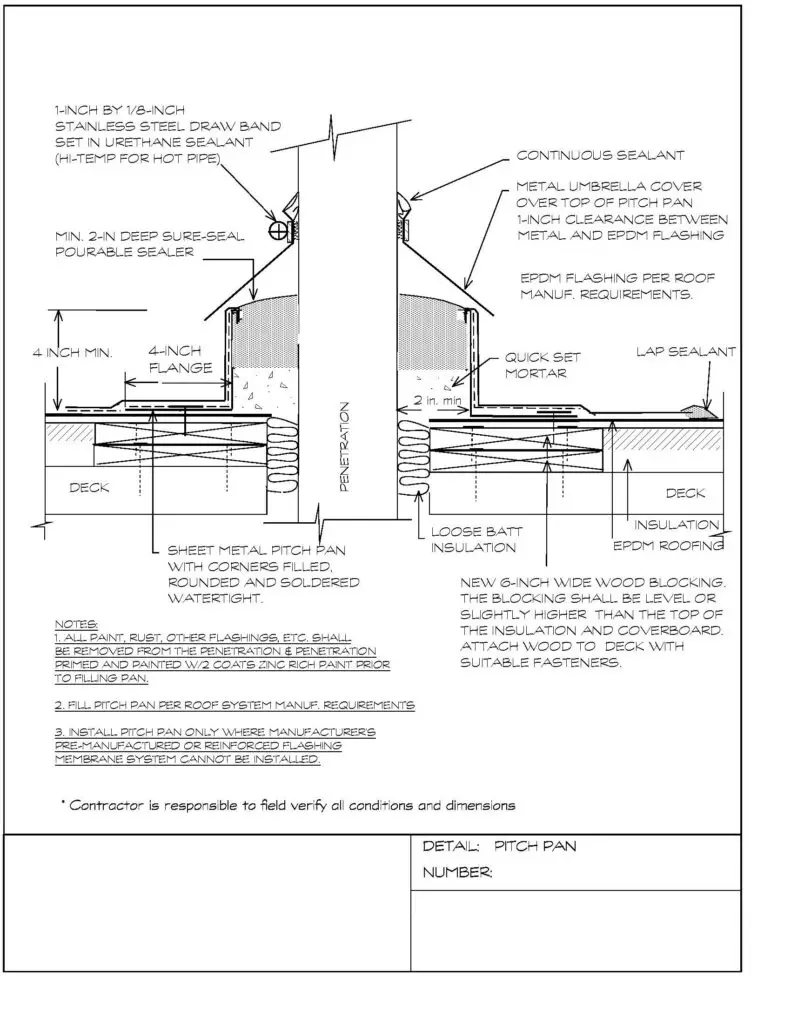
What a Pitch Pocket is Used For
A typical roof penetration such as that required by a vent stack will normally be flashed using a prefabricated boot, sheet metal stack flashing, or a lead sleeve. These materials don’t generally depend on sealant to remain leak-free. But they don’t work for all roof penetrations.
Pitch pockets are used to flash roof penetrations which would be difficult to flash in any other way: small roof penetrations such as those required by electrical conduits, irregularly-shaped roof penetrations such as those required by I-beam supports, or multiple small penetrations very close together.
Types of Sealant Used
The type of sealant used in a pitch pocket depends on the type of roof system the pitch pocket is a part of. The sealant has to be compatible with the roofing material, or it will not bond properly and the seal will fail.
Pitch pans on single-ply roofs like EPDM, PVC, or TPO membrane require a special pourable sealer formulated to be compatible with that system.
After the pourable sealer container is opened, the sealant is poured into the pitch pocket and then hardens. The roofing system manufacturer will either provide the pourable sealer or specify which one to use.
A pitch pocket on an asphalt built-up roof will typical use asphalt cutback mastic, or roofing cement, which is basically asphalt mixed with mineral spirits.
This mastic material is soft out of the bucket and easily packed into the pitch pocket with a trowel. After being exposed to the air it hardens in place.
A pitch pocket on a modified bitumen roof will typically use a compatible pourable sealer, as with a single-ply membrane.
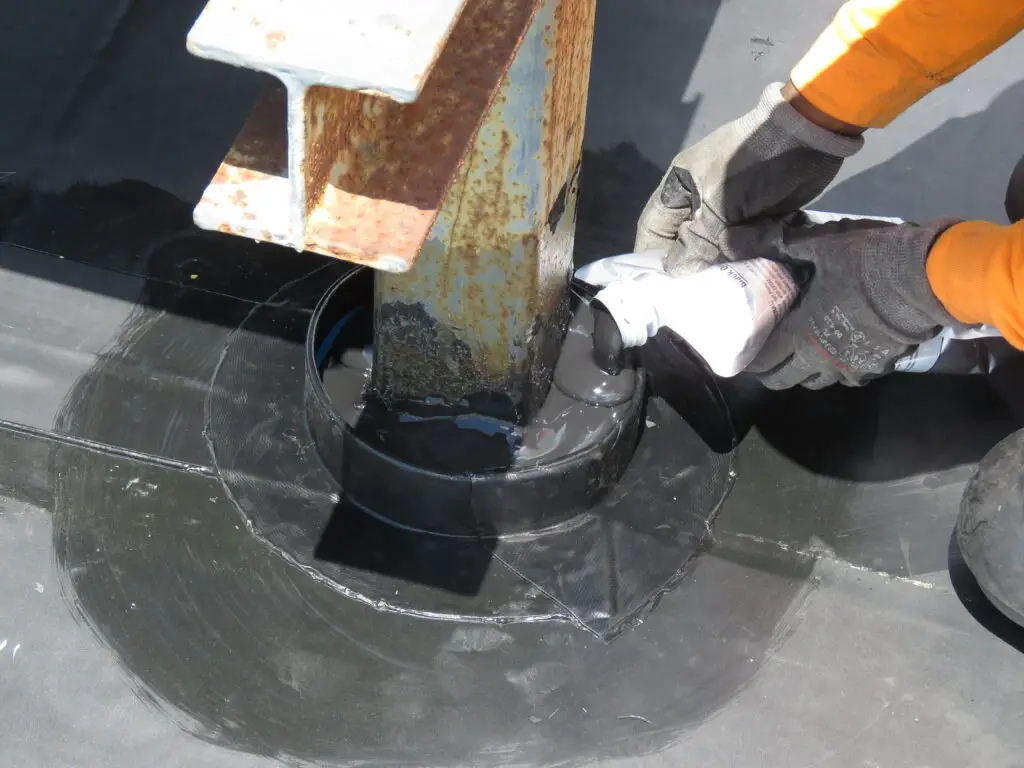
Problems with Pitch Pockets
Pitch pockets are notorious as a source of leaks. Sealant shrinks and degrades over time, leading to eventual leaks. The item being flashed by the pitch pocket may vibrate or shift in the wind and break the seal, especially as the sealant gets older.
The relatively small flange commonly found on metal pitch pans makes it difficult to provide an adequate tie-in with the roof membrane; failed stripping (stripping is the roofing material used to integrate the flange with the roof membrane) is another source of leaks.
Pitch Pans and Roof Maintenance
Because of these issues, and the high risk of roof leaks developing at pitch pocket locations, you should make pitch pockets a high priority during preventative maintenance inspections. Ideally, they should all be checked twice a year.
Inadequate sealant should be properly topped off immediately.
If you have pitch pans filled with asphalt cutback (asphaltic roofing cement or “mastic”), the existing material should be cleaned with a wire brush, and new material should be packed into the pitch pocket on top of it.
Make sure that the material is rounded on top to shed water. You don’t want water to get trapped inside the pitch pocket. It’s not an issue if the new roof cement overflows the box.
If your pitch pocket was filled with a pourable sealant, top it off with another pourable sealant. Use a wire brush to remove any debris and to scarify the surface of the old sealant for better adhesion. Then use water and a cloth to wipe off any remaining grit or dust.
Wait until it’s completely dry before adding the new sealant.
Unless you know for certain that compatibility will not be an issue, never use silicone sealant in a pitch pocket. Silicone sealant is incompatible with many roofing materials unless the proper primer is used.
Simply caulking the tops of the pitch pans is also a bad idea, as you will not be able to achieve a proper long-lasting seal this way.
Don’t Use Pitch Pans if You Don’t Have To
Sometimes you have to use a pitch pocket. Sometimes it can’t be helped; a pitch pan is the only reasonable way to flash some roof penetrations.
But a pitch pocket should be considered a flashing of last resort.
Sometimes a roof penetration can be avoided altogether. At curbed HVAC units, conduit lines can often be be routed down into the building inside the curb, underneath the unit.
It’s often simply easier for the roofer to make a separate roof penetration, and that’s what he’ll do if not told otherwise, so this is something that should be addressed before the work starts.
A gooseneck roof penetration flashing is a good alternative to a pitch pocket. It’s less likely to leak than a pitch pocket, it won’t be a constant maintenance item, and it can accommodate flexible conduits, cables, and few other common items that require a roof penetration.
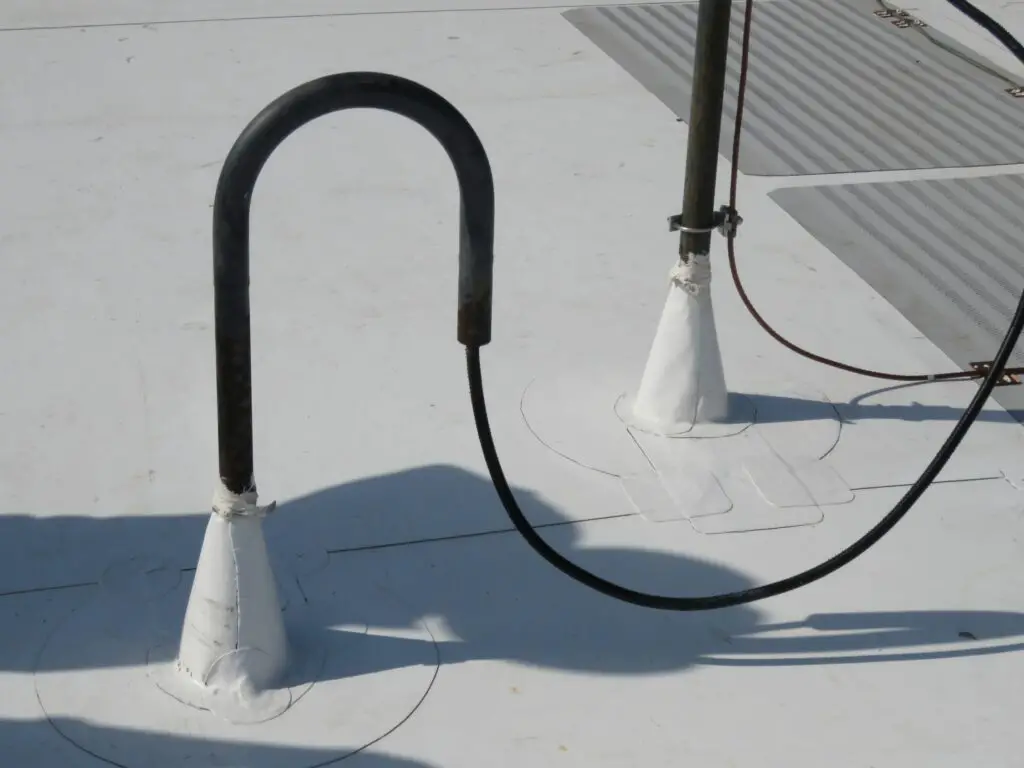
About the Author
Jack Gray is a principal roof consultant and vice president at the Moriarty Corporation, an award-winning building enclosure consultant firm founded in 1967. He is also the editor of the Roof Online website.

Mr. Gray has worked in the roofing industry for over 25 years, with training and practical experience in roof installation, roof inspection, roof safety, roof condition assessment, construction estimating, roof design & specification, quality assurance, roof maintenance & repair, and roof asset management.
He was awarded the Registered Roof Observer (RRO) professional credential in 2009.
He also served as an infantry paratrooper in the 82nd Airborne Division and has a B.A. from Cornell University. Read full bio.
External Sources & References for Pitch Pocket Information
1. General: For a look at some retail-available prefabricated pitch pockets, see these pitch pockets on Amazon, or this page at the Home Depot.
2. General: “Manual Elements: Penetration Pockets” is a short, decent introduction to pitch pans. From 2005, archived on the Professional Roofing magazine website.
3. General: Reasonable concerns and advice regarding pitch pockets can be seen over on Architekwiki. Although it certainly reinforces the idea that a pitch pocket should be a last resort, don’t let “Pitch Pockets” scare you too much.
4. Building Codes: Pitch pockets are not specifically mentioned in the model building codes of the International Code Council, but they are broadly covered by 1503.2 Flashing in the International Building Code and R903.2 Flashing in the International Residential Code. To see language in a building code that has been amended to mention pitch pans specifically, see 1514.2.5 Roof Penetration Flashing from the 2017 Florida Building Code.
5. Technical: See this product data page for assembly and installation instructions for a basic pitch pan. On the Mule-Hide Products website.
6. Technical: See this product data sheet for technical information about a precast, non-sheet-metal (in this case, polyester resin) pitch pocket. On the Chem Link website.
7. Technical: See this product data sheet for technical information about pitch pockets made from injection-molded TPO, intended for use with TPO roof systems.On the Johns Manville website.